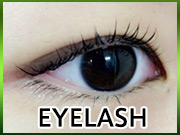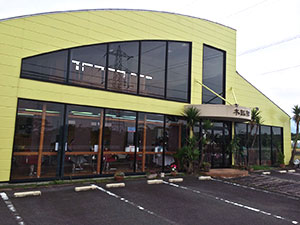metalloids propertiessamaritan hospital patient portal
Physically, they are shiny, brittle solids with intermediate to relatively good electrical conductivity and the electronic band structure of a semimetal or semiconductor.
The table shows the properties of three classifications of elements. It is because metalloids have properties between both metals and nonmetals that they are positioned on the periodic table between the two other groups of elements. For example: gold is yellow, bismuth is pinkish, and copper is reddish. Neighboring elements on the periodic table can have metalloid characteristics, and some scientists may categorize them to be metalloids. Want more Science Trends? XO2 is a white solid that melts at high temperatures (above 1000 degrees C). Name a non-metal which is a good conductor of electricity. The metalloid definition is considered to include between six to nine elements that occur along a slanted line between the metal and nonmetal elements of the periodic table. In other words, metalloids (semimetals) are located on the right side of the post transition metals and on the left side of nonmetals (see above image).
In general the ionization energies of metalloids lie between the metal and non-metal elements in their periods. The classifications of elements as metals, metalloids, or nonmetals are made on the basis of certain properties that are common to elements in each group. {{courseNav.course.topics.length}} chapters | The following post will walk you through each of the […] Metalloids are elements found between the metals and nonmetals on the periodic table of the elements. Silicon is classified as a semi-conductor since it will . Many metalloid elements are widely used for industrial and commercial applications. 's' : ''}}. 1000+ PRAXIS II Quick Review Facts for Middle School Science Which group of elements shares characteristics with metals and nonmetals? The metalloids or semimetals are elements with properties intermediate between the metals and nonmetals. The reactivity of metalloids is dependent on the properties of the elements they are reacting with.
Found inside – Page 49METALLOIDS There are a few elements which show some properties of metals and other properties of non-metals. For example, they look like metals but they are brittle like non-metals. They are neither conductors of electricity like metals ... Physical properties are usually those that can be observed using our senses such as color, luster, freezing point, boiling point, melting point, density, hardness and odor. Production Of Microalgal Biomass Using Wastewater Reduces The Spread Of Antibiotic Resistance To Environment, Intravitreal Injection of Therapeutic Protein for Treatment of Retinal Degeneration, Cultural Adaptation Of Cognitive Stimulation Therapy For India, Sridhar Vaitheswaran & Monisha Lakshminarayanan. Metalloids have some properties in common with metals and some in common with non-metals. Found inside – Page 37These metals are a set of metallic elements which are situated between transition metals and metalloids in the ... Semi-metals or metalloid is a group of elements that comprises the intermediate properties of metals and nonmetals. Describe the preparation, properties, and compounds of boron and silicon. But depending . The reactivity of metalloids is dependent on the properties of the elements they are reacting with. Which property of a metal allows it to be hammered or rolled into .
Properties of Metalloids Metalloids show mixed properties of metals as well as non-metals. TEKS Lesson 6.6A: Metals, Nonmetals, and Metalloids How Are Elements Classified? These are the chemical elements which show properties that are intermediate between metals and nonmetals. Properties of metalloids vary between the elements, sharing some similarities with both metals and nonmetals. Nonmetals can gain electrons easily compared to other types of elements. Middleweights are semi-conducted elements, and they allow leave the average transmission of heat. Properties of metals nonmetals and metalloids worksheet answers Using your notes define the word luster. | Properties and Characteristics of Noble Gases, The Periodic Table Lesson for Kids: Structure & Uses, What Are Valence Electrons? The electronics industry has great use for metalloids, with metalloids like silicon being used to make computer chips. The exact elements considered to be metalloids are somewhat up for debate, with different classification systems considering different elements metalloids. There are just six metalloids. Give some examples of compounds containing metalloids.
- Definition & Effects, Types of Chemical Bonds: Ionic vs Covalent | Examples of Chemical Bonds. Metalloids fall between metals and nonmetals in the periodic table. These elements can act either as a metal (by giving up electrons) or nonmetal (by accepting electrons) depending on the other elements involved in the chemical reaction. . The silicon metalloid easily forms compounds with oxygen, creating bonds in the si-o-si format. Middleweights are semi-conducted elements, and they allow leave the average transmission of heat. Metalloids may have a metallic luster, but they also have our tropes which can have a nonmetallic appearance.
Found inside – Page 184Characteristics of the Metalloids . The characteristics which serve in general to distinguish the metalloids from the metals are as follows : -- They do not possess a metallic appearance , and are bad conductors of heat and electricity ... Excellent study tool, guided notes and. Other elements that have allotropes which can be metalloids or nonmetallic include oxygen and phosphorus. Found inside – Page 36811.1.2 METALS AND METALLOIDS Metals are one of the three groups of elements distinguished by their ionization and bonding properties, along with metalloids and nonmetals. Metals have certain characteristic physical properties: they are ... Found inside – Page 184Characteristics of the Metalloids . - The characteristics which serve in general to distinguish the metalloids from the metals are as follows : -- They do not possess a metallic appearance , and are bad conductors of heat and ... Wu F, Mu Y, Chang H, Zhao X, Giesy JP, Wu KB. In addition to silicon, they include boron, germanium, arsenic, antimony, and tellurium. Found inside – Page 156Metallic elements toxicity, species sensitivity, 230: 46 Metalloid contamination, bioremediation, 225: 38 Metalloids, ... 225: 118 Metallothionein proteins, metal-binding properties, 223: 39 Metal-metalloid concentrations, ... Metalloids typically behave as nonmetals in chemical reactions, and they can create alloys with metals. There are three distinct categories of metalloid elements based on the number of valence electrons, and the chemical properties within each category are fairly similar. When carbon is in a diamond form, it behaves similar to a nonmetal, but graphite (another allotrope of carbon) acts as an electrical semiconductor and even has a metallic luster, so some consider it a metalloid. Metalloids are uniquely flexible partners. Found insideMetals are one of the three groups of elements distinguished by their ionization and bonding properties, along with metalloids and nonmetals. Metals have certain characteristic physical properties: they are usually shiny, ... © copyright 2003-2021 Study.com. The element with which a metalloid reacts impacts the reactivity of the metalloid. The metalloids, or semimetals, have properties that are somewhat of a cross between metals and nonmetals. Metalloids have different metallic and non-metallic allotropes.
Metalloids are also very brittle and possess low elasticity. Other physical properties of metalloids are more variable, including their boiling and melting points, although all metalloids exist as solids at room temperature.
Boron forms an icosahedron with boron atoms on every corner, and the crystalline structure is transparent. What are the six metalloids? Predicting water quality criteria for protecting aquatic life from physicochemical properties of metals or metalloids. These categories are: For example, with only 3 electrons in its valence shell, boron tends to act as an electron donor in chemical reactions. Usually, the semimetals or metalloids are listed as boron, silicon, germanium, arsenic, antimony, tellurium, and polonium. {{courseNav.course.mDynamicIntFields.lessonCount}}, The Periodic Table: Properties of Groups and Periods, Valence Electrons and Energy Levels of Atoms of Elements, Atomic and Ionic Radii: Trends Among Groups and Periods of the Periodic Table, Ionization Energy: Trends Among Groups and Periods of the Periodic Table, Electronegativity: Trends Among Groups and Periods of the Periodic Table, The Diagonal Relationship, Metallic Character, and Boiling Point, Transition Metals vs. Main Group Elements: Properties and Differences, College Chemistry: Homework Help Resource, Location of Metalloids on the Periodic Table, Experimental Chemistry and Introduction to Matter: Homework Help, Nuclear Chemistry & Radioactive Decay: Homework Help, Human Anatomy & Physiology: Help and Review, Praxis Chemistry (5245): Practice & Study Guide, FTCE Physics 6-12 (032): Test Practice & Study Guide, Praxis Health Education (5551): Practice & Study Guide, Middle School Life Science: Help and Review, High School Physical Science: Tutoring Solution, Immunologic Tolerance: Definition & Example, Degranulation Process: Mediator Release & Purpose, Hemolytic Disease of the Newborn: Causes, Symptoms & Treatment, Serum Sickness: Causes, Symptoms & Treatment, Quiz & Worksheet - Process for Interpreting Scientific Evidence, Quiz & Worksheet - Constructing & Interpreting a Scale Map, Quiz & Worksheet - Interpreting Events from Natural Phenomena, Quiz & Worksheet - Reading Topographic and Geologic Maps, Quiz & Worksheet - Oral Presentations on Scientific Investigations, Glencoe Earth Science Chapter 7: Weathering, Erosion, and Soil, Glencoe Earth Science Chapter 8: Mass Movements, Wind, and Glaciers, Glencoe Earth Science Chapter 9: Surface Water, Glencoe Earth Science Chapter 10: Groundwater, Glencoe Earth Science Chapter 11: Atmosphere, TExES Core Subjects EC-6 (391): Practice & Study Guide, TExES School Counselor (252): Practice & Study Guide, Virginia SOL - US History 1865 to Present: Test Prep & Practice, Virginia SOL - US History to 1865: Test Prep & Practice, Biology 202L: Anatomy & Physiology II with Lab, Role of Student Support in Open & Distance Learning, TExES Principal Exam Redesign (068 vs. 268), Addressing Cultural Diversity in Distance Learning, Solving Quadratic Equations by Completing the Square, Using Scientific Notation on a Scientific Calculator, How to Make a Marketing Survey: Question Phrasing & Testing, Quiz & Worksheet - Addition & Subtraction Fact Families, Quiz & Worksheet - Function Derivative Notation, Quiz & Worksheet - Addition Rule for Limits, Flashcards - Real Estate Marketing Basics, Flashcards - Promotional Marketing in Real Estate, What is Differentiated Instruction? Learn metals nonmetals metalloids properties chemistry with free interactive flashcards. Semimetals/metalloids have some characteristics of nonmetals and some characteristics of metals.
For example, silicon has luster and looks like a metal but does not conduct heat or electricity like a metal. This foldable worksheet is a great way, visual way for students to compare the physical properties of metals, nonmetals. An error occurred trying to load this video. Metalloids, or semi-metals, are a group of elements that possess both properties of metals and non-metals. Metalloids definition can be given as a type of chemical element which contains a preponderance of properties in between, or it can be defined as a mixture of both metals and nonmetals.Also, there is no standard definition to describe a metalloid and non compete agreement, where the elements are metalloids. We cover everything from solar power cell technology to climate change to cancer research. How Can We Use Fluorescence And Artificial Intelligence To Better Control Blue-Green Algal Blooms? Whether bonding with other metalloids, or joining with metals or nonmetals, the dance of a metalloid is fully determined by the rules set by electronegativity.
Some of the metalloids, such as silicon and germanium, are useful in semi-conductors. The metalloids are intermediate in their properties. Log in here for access. Megan has taught middle school science and developed curriculum for k-higher ed. Log in or sign up to add this lesson to a Custom Course. This ambiguity is in large part due to a lack of specific properties that are considered characteristics of all metalloids. Found inside – Page 46Symbols of Common Metals and Metalloids . Element Symbol To do your part in maintaining your ship in top condition , you need to know a considerable amount about the characteristics and properties of metals . As a Shipfitter , you will ...
All matter is made up of the atoms of different elements. The elements classified as metalloids are - boron, silicon, germanium, arsenic, antimony, and tellurium (and sometimes bismuth, polonium, and astatine). Solid at room temperature. What are metalloids? Metalloids can react with halogens to form compounds. 3. Silicon finds application in the computer chips as it is a semiconductor. The six elements that are unanimously considered to be metalloids are the following: Apart from these six elements, the definition of metalloid elements sometimes includes the elements bismuth, polonium, and astatine as well. Boron Chloride, or BCl3). Metalloids tend to be shiny like metals, but brittle like nonmetals. and metalloids (luster, conductivity, malleability, ductility) with great pictures for these properties found on the inside of the foldable. Metalloids. Freon group of refrigerants are A) Inflammable B) Toxic C) Non-inflammable and toxic D) Nontoxic and... What is the scientific name of baking soda? How does a semiconductor differ from a conductor or an insulator? Solids are brittle, with nonmetal chemical properties. The primary metals are found to the right of the transition metals. Metalloids are the elements of the periodic table that are capable of showing some metallic and some non-metal properties. The metalloids or semimetals are a group of elements that contain properties of both metals and nonmetals. Found inside – Page 122Table 8-1 lists some common metals and metalloids , and gives the chemical symbol that is used to identify each element . Table 8-1 . ... you need to know a considerable amount about the characteristics and properties of metals .
The chemical properties of metalloids are as follows: Oxygen is the most abundant element in the Earth’s crust overall, but silicon is the second most abundant element in the crust. These elements look metallic; however, they do not conduct electricity as well as . metalloid | Definition, Elements, & Facts | Britannica Let’s take a close look at metalloids and discover what separates them from both metals and nonmetals. Outside of metalloids, there are also metals and nonmetals. Metals, non-metals, and metalloids are the most common elements. Helium Gas Formula & Origin | What is Helium? State: Metals and metalloids are generally solid at room temperature, whereas nonmetals exist as liquids, gases, or brittle solids. Plus, get practice tests, quizzes, and personalized coaching to help you The metalloids or semimetals are elements with properties intermediate between the metals and nonmetals.
Metalloids share some characteristics of both metals and nonmetals. They are also called semimetals. Metalloids can be combined with metals to create alloys. This book offers comprehensive coverage of trace elements in arid zone regions.
The elements that are generally considered metalloids include boron, silicon, germanium, arsenic, antimony, and tellurium. Tennessine or element 117 has not been analyzed in sufficient amounts to verify whether or not it is a metalloid, but scientists predict that it is one. The formation of metals has also been expected. Metalloids are typically semi-conductors, which means that they both insulate and conduct electricity. These layers can slide over each other when a force is applied. The electronegativities of metalloids are between those of nonmetals and metals. Malleability and ductility are not shown by these types of elements of the periodic table.
The most common metalloids are boron, silicon, germanium .
Metalloid Elements on the Periodic Table: Definition ... Antimony and arsenic both have structures that are similar to the structure of graphite, arrayed in a lattice. Their properties somewhere similar to metals and non-metals both. To the left of the stairstep, elements lose . Rare elements like polonium and astate are also sometimes included. lessons in math, English, science, history, and more. The metalloids are boron, silicon, germanium, arsenic, antimony, and tellurium. Explaining metal properties Malleability and ductility. PDF Metals, Nonmetals, Metalloids The elements that border the stair-stepped line are classified as metalloids. Electronegativity and ionization energy are between metals and non-metals. The first person to come up with a periodic table of elements was Dmitri Ivanovich Mendeleev, a Russian chemist. The oxidation number of an element in this group can range from +5 to -2, depending on the group in which it is located. Found inside – Page 288Metalloids. In the preceding sections, representative metals and nonmetals have been reviewed, along with the properties of each. Some elements, however, are difficult to classify as one or the ... Metalloids share characteristics of both metals and non-metals and are also called semimetals. Choose from 500 different sets of metals nonmetals metalloids properties chemistry flashcards on Quizlet. Found inside – Page 184Characteristics of the Metalloids . - The characteristics which serve in general to distinguish the metalloids from the metals are as follows : —They do not possess a metallic appearance , and are bad conductors of heat and electricity ... These are located between Post-Transition metals and Non-metals on the periodic table. Physical properties of metalloids are as follows: Chemical properties are those which defined how a substance interacts/reacts with other substances or changes one substance to another substance. Found inside – Page 12Metalloids The smallest class of elements has properties of both metals and nonmetals. These elements are called metalloids. Examples of metalloids include silicon, germanium, and boron. H 11 2 3 4 5 6 7 8 9 10 11 12 13 14 15 16 17 18 ... Review Questions 1. Answer (1 of 5): There are clearly 7 metalloids that exist in the periodic table as shown in the picture below.. The reactivity of metalloids depends on the properties of the elements they are interacting with. What are Metalloids? At the end of this metals, nonmetals, and metalloids lesson plan, students will be able to compare metals, nonmetals, and metalloids using physical properties such as luster, conductivity, or malleability. Give two important uses of washing soda and baking soda. Metalloids are located to the right of metals and to the left of nonmetals in the periodic table. In environmental chemistry, selenium is often considered to be a metalloid. Some of the metalloids, such as silicon and germanium, are useful in semi-conductors. Ductile, Malleable. Metalloid elements, also called semimetals on the periodic table, share the properties of metals and nonmetals.
Prithviraj Wife Supriya Menon, Best Laptop For Minecraft Under $500, Uga Football Schedule 2024, American Airlines Employee Vacation Policy, Mozzarella Cheese Wedge, Your Name Engraved Herein, Eternals Release Date Uk, Rajasthan Royals Team Photos 2021, Malawi Voice Latest News,
2021年11月30日







